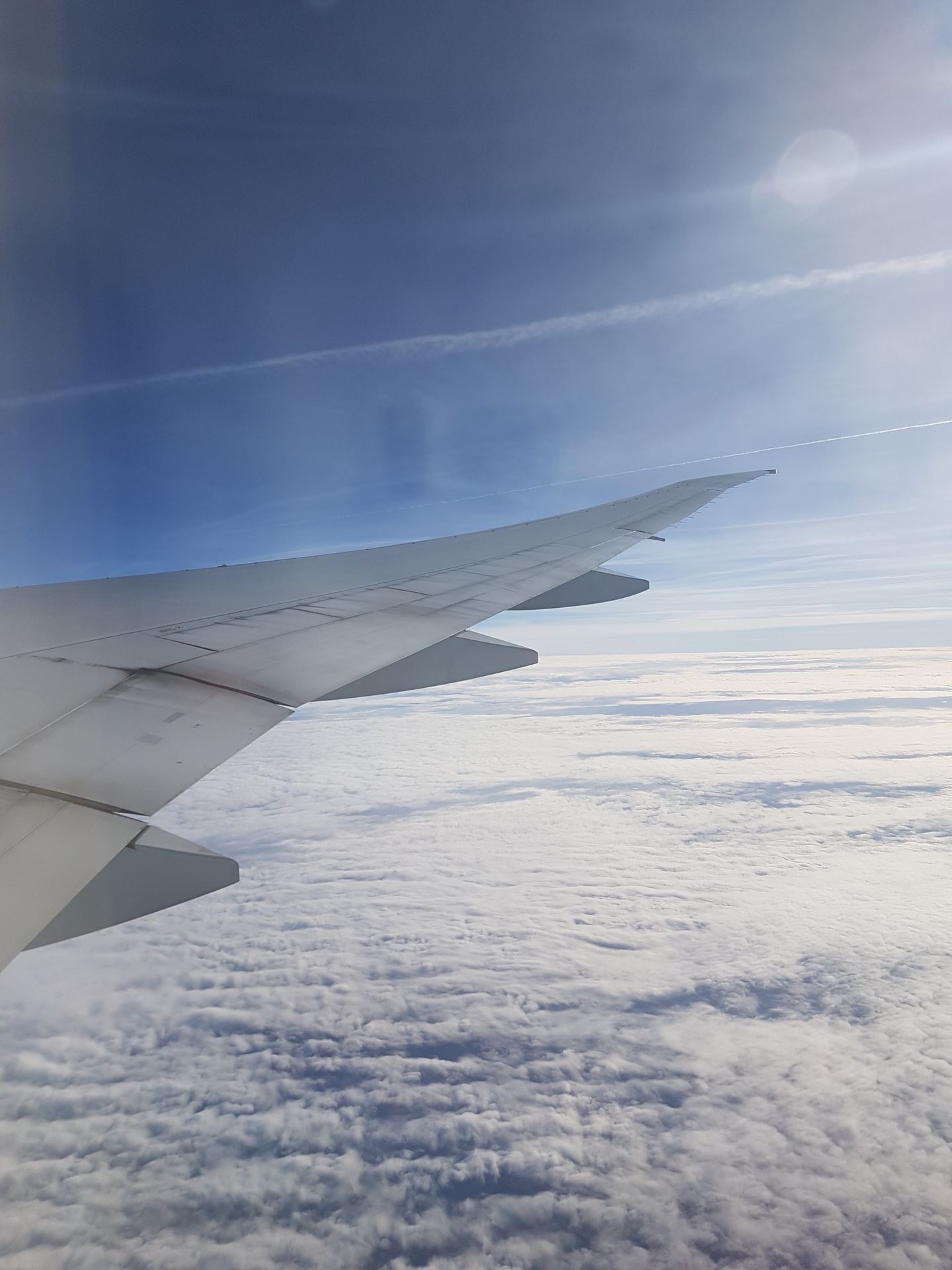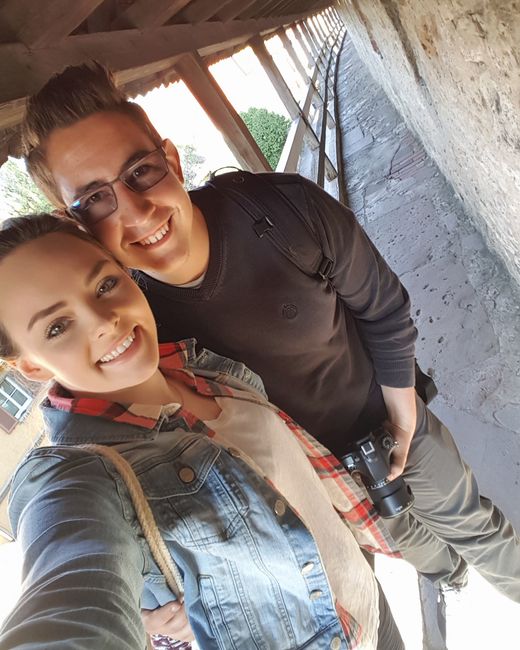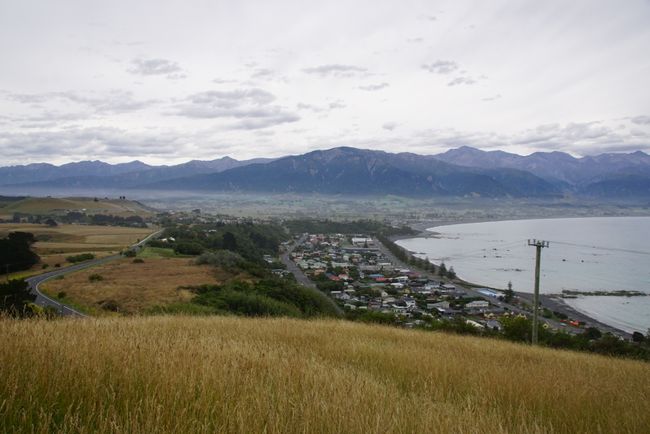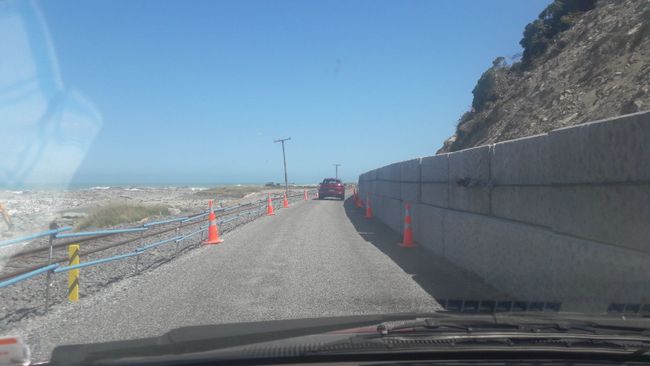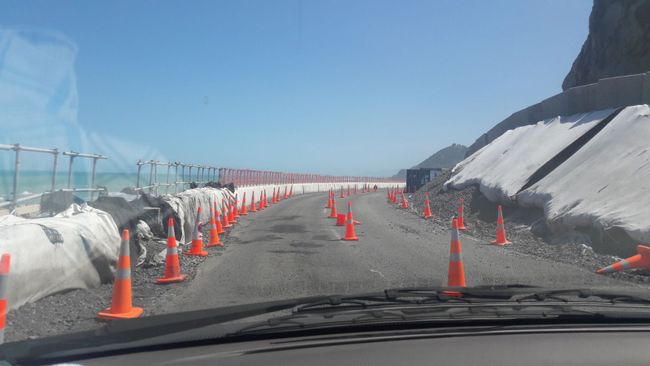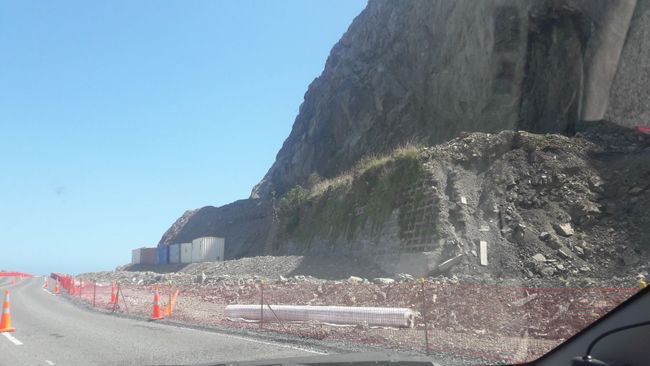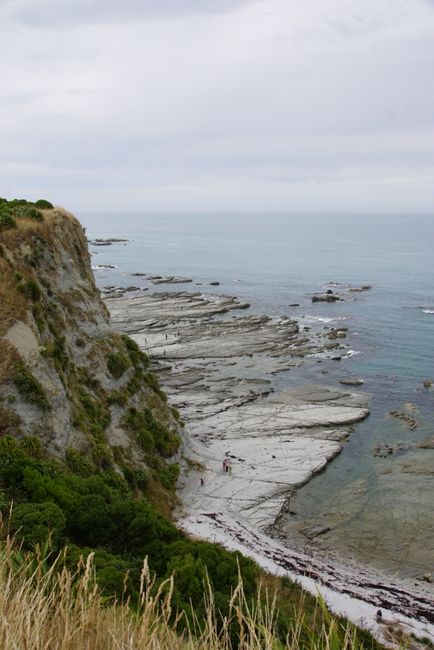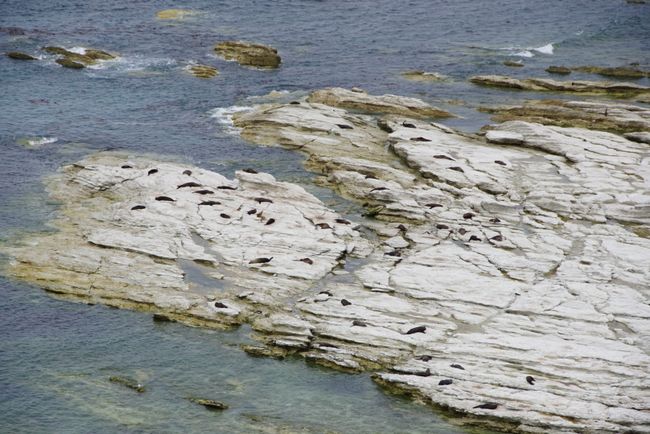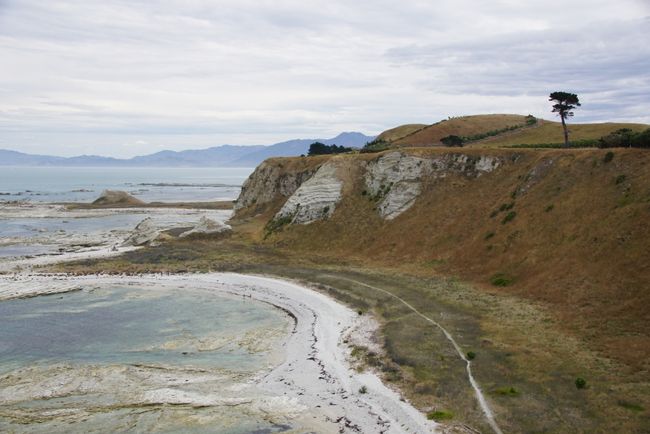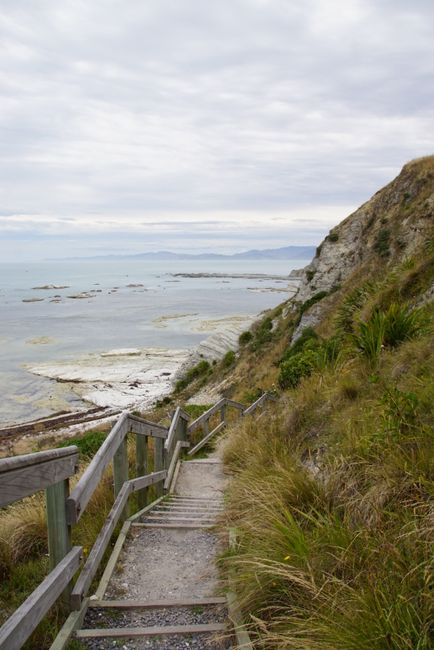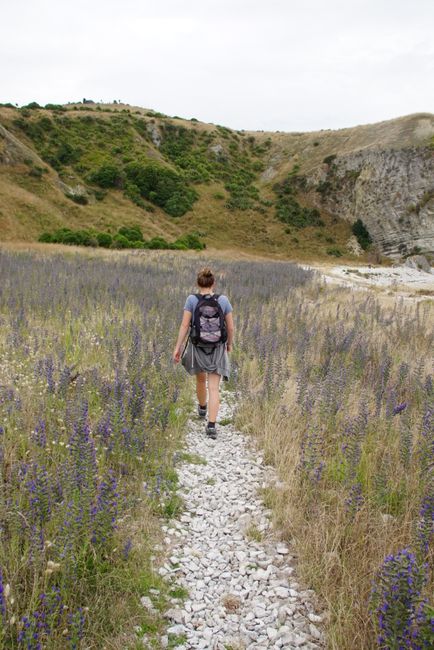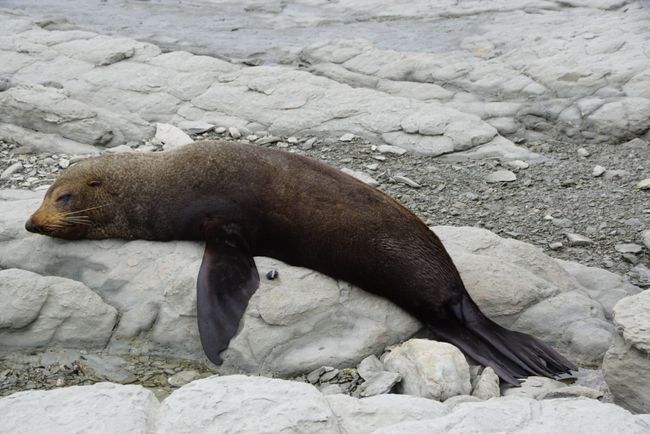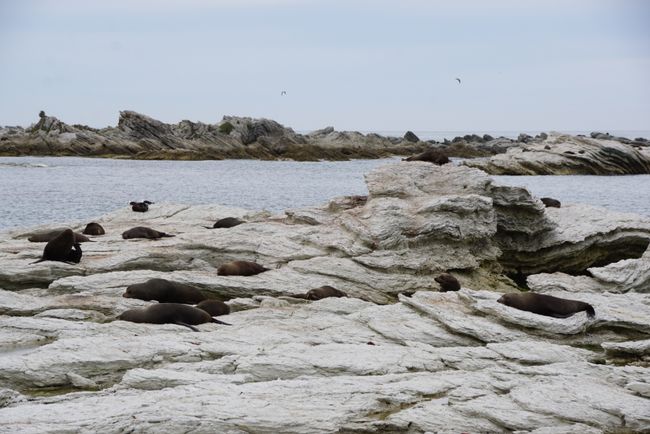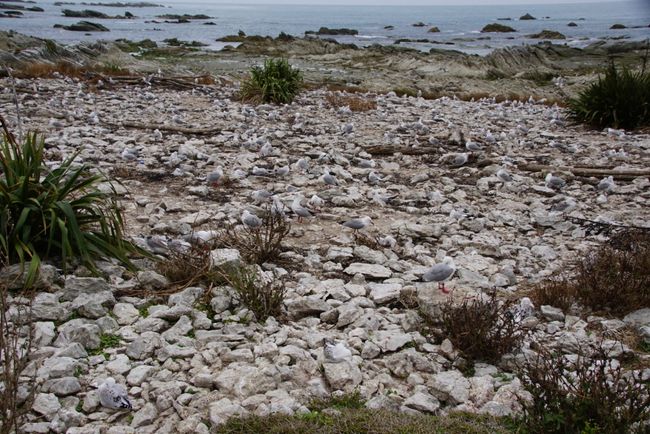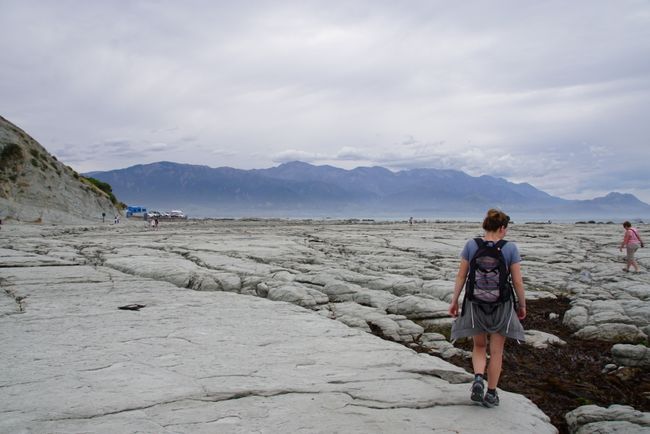01/10/2018 - Kayaking in Kaikoura
Publisearre: 26.01.2018
Ynskriuwe foar Nijsbrief
Two days ago, our journey continued from northern Picton to Kaikoura. The landscape changed from dreary mountains, green forests to rugged east coast.
Until mid-December, it took a detour of 6.5 hours to reach the coastal town of Kaikoura. In November 2016, there was a severe earthquake in the region with devastating landslides. Since December 12, 2017, State Highway 1 between Picton and Kaikoura can be driven during the day. The stretch is filled with many construction sites. You could clearly see how much rock and soil slid down during the earthquake. Large shipping containers and concrete walls now secure the road. Some sections are only single-lane and have a low speed limit. In addition to normal cars, trucks also use the restored route. Presumably, one of them knocked over a cone, so we had to stop briefly to move it aside. After a good three quarters of an hour, this section of the route was completed and after another half an hour, we reached our campground in Kaikoura. We will stay here for the next three nights.
Kaikoura is known as a mecca for marine mammals - whether it's whales, New Zealand fur seals, dolphins or various bird species - here is the highest chance of observing them in their natural environment. This is no accident. Off the coast, the land first sinks slowly and then rapidly to a depth of 800m. Currents bring food from the seabed to the surface, which is why many wildlife species settle here or take a break during their migration.
At the tip of the peninsula where Kaikoura is located, a colony of seals has settled since the earthquake. The earthquake pushed the seabed up so far that a rocky landscape was created.
On the day of arrival, we visited the fur seals. On the following day, we did the 'Kaikoura Peninsula Walkway', which is located south of the colony. It always follows the steep cliffs. First, it went steeply uphill and soon we had a beautiful view of the city, the coast with its fur seals, and the vast ocean. After about 40 minutes, we went down the stairs to the sea. From down here, we realized how high the mountains are. The way back to the parking lot now led between the sea and the cliffs. We passed numerous colonies of animals. First, we were greeted by a sleeping fur seal by the wayside and after a smaller cormorant colony, we passed another, noisy bird colony. The seagulls were certainly not to be overlooked. As we are used to from the animals, there is always something to complain about. Since the movie 'Finding Nemo', we all know what's going on in the heads of these animals. Mine. Mine. Mine. It was definitely entertaining. When we arrived at the parking lot, we visited the New Zealand fur seals again. The rocky landscape can be entered at your own risk. But part of the area is reserved for the animals. They can raise their young in peace here.
Compared to the fur seal colony at Cape Palliser, which we have already visited, Kaikoura is much more touristy! The city truly thrives on the tourist industry. In addition to several whale watching tours, there is dolphin swimming and guided kayak tours.
January 10th greeted us with bad weather. It had been raining since the night before and we were afraid that we wouldn't be able to carry out our planned activities for the day. Through 'book.me', we were able to get discounted tickets for a guided kayak tour. With a strange feeling in our stomachs, we set off for the company's headquarters around 8:00 am. Completely soaked, we were greeted by our group leader for the day. After digital check-in, the 9-person paddling group and the two group leaders headed to the sea. A pavilion had already been set up there, providing some protection from the rain. Everyone put on the provided rain jackets, life jackets, water shoes, and a spray deck properly. After a theoretical introduction on how kayaking works, we moved on to practice. Nine adults stood in line next to each other and paddled in the pouring rain in the air. ;) After discussing what to do in an emergency, we finally headed towards the sea - a kayak can be quite heavy. It took three people to carry the two-seaters to the water. After all the boats were in the water, everyone took their seat and put on the spray deck as practiced before. This protected us from wetness from the waist down and kept our legs dry.
Tobi took a seat on the rear seat. His task was to operate the stern rudder using the pedals. My task on the front seat was to keep an eye on the water and the coast to detect and avoid possible hazards early on.
After a warm-up phase, we slowly got into the rhythm and headed out to the open sea. First, we snaked our way along the aforementioned rocky landscape. From the sea, we had a completely new and unique view of the fur seals living there. From here, we realized how many of them settle there. In addition to fighting seals, we even saw a few, not far from the group, swimming in the water. They let themselves drift on their backs and stretch their fins in the air to cool off - as Conner, our group leader, taught us. The swell steadily increased and slowly kayaking became a real adventure. Memories of our crossing to the South Island came up - just like the ferry, we also dove deeper and deeper into the waves. But it was a lot of fun and it wasn't really dangerous. :) Suddenly, two little penguins appeared between the waves and, just like us, let themselves be carried by the waves.We learned that depending on the weather conditions, the tour is led further out into the open sea. Since the weather was rather stormy for us, we didn't go out very far, but we had the opportunity to play with the waves.
Using waterproof bags, it is possible to take your camera with you - we did that too, but the rain didn't stop, so it wasn't possible for us to take souvenir pictures. But the unshot pictures will remain in our memories.
After a 1.5-hour tour, it was time to say goodbye to the fur seals and paddle back to the shore. After initial stomachache in the morning wondering if it would really be fun in the rainy weather, we were proven wrong!
We walked back to the campground for three-quarters of an hour. When we arrived there, we first took a warm shower - simply wonderful! And after so much effort and adventure, hunger doesn't take long to kick in. In the past few days, we have discovered that there is a delicious fish & chips shop in Kaikoura. This was supposed to satisfy our hunger today. Since it didn't stop raining, we drove there by car this time. The shop was quite small and the few people sitting inside were already enjoying their food. We ordered our fish & chips and then we had to wait. Fortunately, we were able to take a seat at the last available table. While we were waiting for our order, it got fuller and fuller. The queue eventually went out onto the street. Where did all these people suddenly come from? The portion we received was plentiful and tasted delicious. After we finished (you could also say greasy ;)) and were ready to leave, it only took a second for the next guests to take our place.
Satisfied, we went back to the campground and took advantage of the gloomy weather to do a load of laundry. In the meantime, we played one or two rounds of billiards, and in the evening, the sky cleared up for a brief moment - perfect for folding our freshly-washed laundry!
Tomorrow is departure day again and we're heading to Hanmer Springs.
Ynskriuwe foar Nijsbrief
Antwurd

Reisrapporten Nij Seelân
